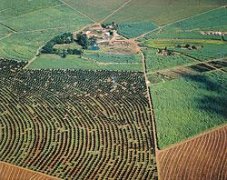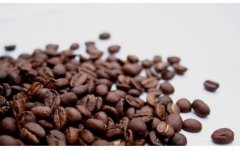Brief introduction to the treatment method of grinding degree and baking degree of Bolivian boutique coffee beans with dried almonds

Coffee trees used to be planted around gardens as hedges and ornamental plants in Bolivia. Real commercial production began in the early 1950s. The 1975 frost severely damaged Brazil's coffee industry, but Bolivia benefited from it and grew rapidly.
Coffee from Bolivia:
Bolivian coffee is grown at altitudes of 180- 670 meters.
Features of Bolivian Coffee:
Flavor: premium blend coffee
Recommended baking method: medium to deep barbecue
★: Generally
Bolivian coffee market:
Bolivian-grown coffee, of which Arabica washed beans are exported to Germany and Sweden, tastes not the best today and is slightly bitter
Bolivian coffee has the advantage of high altitude and excellent coffee varieties, where traditional iron pica and small amounts of kadura are highly valued on the world market.
Bolivia is not a big coffee producer, but the excellent altitude and climatic conditions of the La Paz Mountains make the coffee produced here excellent. Bolivian fine coffee is delicate, bright, sweet and aromatic, and is a typical coffee that makes people feel clean and relaxed. The coffee here has subtle fruity aromas such as pear, apple, apricot, orange and lemon. On the palate, malt and chocolate and nutty flavours are pleasant with sweet notes
Most of the traditional Typica species are grown in the mountains above 2000 meters with fertile volcanic soils. The water used to treat coffee also comes from melting snow in the mountains, which is completely free of pollution. Due to the high altitude and low temperature all year round, Typica species here are not as large as those in neighboring countries, but have more diversified fragrance and fuller sweetness. Clean malt sweet, orange, red dates and lemon peel aromas, delicate and elegant. In the aftertaste, sweetness and aroma are very persistent.
Breed: Typica
Country: Bolivia
Origin: Bolivia Yungas Uchumachi No l berto Mamani
Altitude: 1900-2100 meters
Bake: Light Bake
Pre-fragrance: Hazel fruit, tangerine peel and hawthorn, etc.
Production: It is recommended that the ratio of water powder is 1:15, the water temperature is 90℃, the extraction time is about 2 minutes, and the water in the tail section is not required.
Flavor: Roasted nuts and dried almonds, orange, white pomelo Lake Titicaca is located on the Coyao Plateau at the border between Bolivia and Peru. It is the highest and largest freshwater lake in South America. It is also one of the largest freshwater lakes in the world. It is also the highest lake in the world that can be navigated by large ships. It is the third largest lake in South America.
Important Notice :
前街咖啡 FrontStreet Coffee has moved to new addredd:
FrontStreet Coffee Address: 315,Donghua East Road,GuangZhou
Tel:020 38364473
- Prev

A brief introduction to the cultivation of rich and unique boutique coffee beans in Bolivia, geographical location, climate and altitude
We know that Arabica coffee cannot be grown in cold places above 2000 meters above sea level. if the altitude is too high, coffee trees will frost because the temperature is too low. So Bolivian coffee is mainly grown in the Yungas region northeast of La Paz. It borders the Amazon basin and is about 1500-2500 meters above sea level with an average annual temperature of about 10-15 ℃. Therefore, guarantee
- Next

A brief description of the flavor and aroma characteristics of Rose Summer Fine Coffee Bean.
The fragrance of flowers, tropical fruits, strong sweetness; these are the feelings that Rose Summer has always given us. Properly baked, they make you feel like sipping the fragrance of a bouquet of flowers. Maybe you don't know the story of Rosa, an ancient native species from Ethiopia that was brought into a coffee experimental garden in Costa Rica as a coffee sample.
Related
- Detailed explanation of Jadeite planting Land in Panamanian Jadeite Manor introduction to the grading system of Jadeite competitive bidding, Red bid, Green bid and Rose Summer
- Story of Coffee planting in Brenka region of Costa Rica Stonehenge Manor anaerobic heavy honey treatment of flavor mouth
- What's on the barrel of Blue Mountain Coffee beans?
- Can American coffee also pull flowers? How to use hot American style to pull out a good-looking pattern?
- Can you make a cold extract with coffee beans? What is the right proportion for cold-extracted coffee formula?
- Indonesian PWN Gold Mandrine Coffee Origin Features Flavor How to Chong? Mandolin coffee is American.
- A brief introduction to the flavor characteristics of Brazilian yellow bourbon coffee beans
- What is the effect of different water quality on the flavor of cold-extracted coffee? What kind of water is best for brewing coffee?
- Why do you think of Rose Summer whenever you mention Panamanian coffee?
- Introduction to the characteristics of authentic blue mountain coffee bean producing areas? What is the CIB Coffee Authority in Jamaica?

